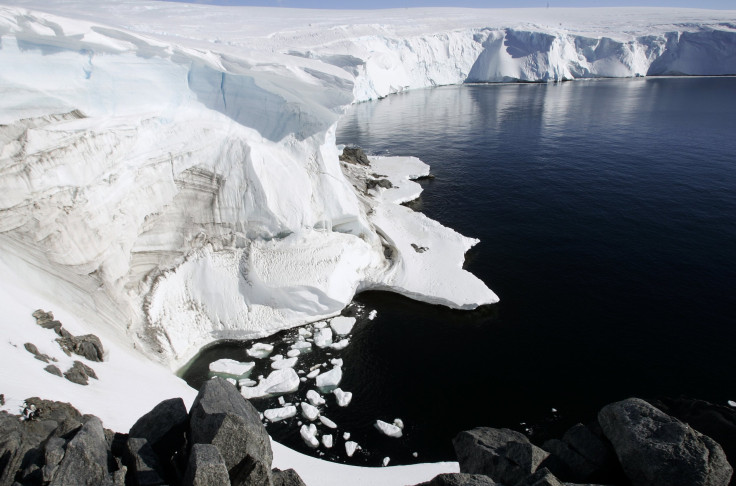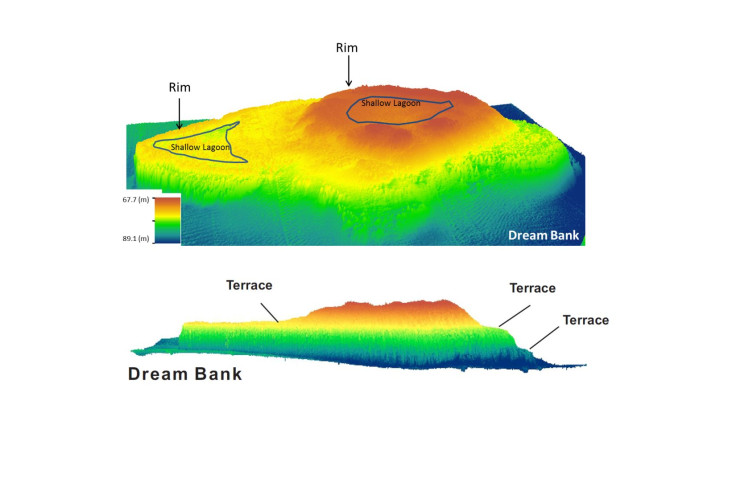Melting Glaciers Could Raise Sea Levels In Sharp Bursts, Reef Fossils Show

If all the land ice present on Earth today were to melt, it would raise the global sea levels by about 70 meters (230 feet), according to the United States Geological Survey. Under the onslaught of global warming, sea levels have been rising steadily in the recent years, but researchers looking at historical data have found these rise could happen in sharp bursts instead.
Fossil coral reefs that lie drowned in the Gulf of Mexico, off the coast from Corpus Christi, Texas, “showed sea level rose in several bursts ranging in length from a few decades to one century,” scientists from Rice University and Texas A&M University-Corpus Christi’s Harte Research Institute for Gulf of Mexico Studies, said in a statement Thursday.
The researchers used sonar data collected in 2012 by the Schmidt Ocean Institute’s research vessel Falkor which mapped the seafloor — including 10 fossil reef sites — offshore Texas. Spread across several dozens of miles, the fossil reef shelves are 35-50 miles off the shore, and under about 195 feet of water.
“What these fossil reefs show is that the last time Earth warmed like it is today, sea level did not rise steadily. Instead, sea level rose quite fast, paused, and then shot up again in another burst and so on. This has profound implications for the future study of sea-level rise,” Rice marine geologist André Droxler, who is a co-author of a study on the matter, said in the statement.
To arrive at their conclusion, the researchers first deduced — using previous studies on the Texas shoreline during the last ice age and dates of fossil samples that had been collected earlier — that the drowned reefs began forming about 19,000 years ago. That was close to the end of the last ice age when ice caps and glaciers were melting and rising sea levels.
The 3D sonar map from Falkor showed all the drowned reefs to have terraces, which are typical of coral reef structures and a sign of rising seas, according to the researchers. Corals that makeup reefs need sunlight to survive, and therefore typically grow close to the water’s surface. To avoid drowning in case sea levels rise, reefs adopt a strategy called backstepping — “the ocean-facing side of the reef breaks up incoming waves just enough to allow the reef to build up a vertical step” or a terrace. The strategy doesn’t work if the seas rise too fast, though.

Rice graduate student Pankaj Khanna, who is the lead author of the study, said in the statement: “The coral reefs’ evolution and demise have been preserved. Their history is written in their morphology — the shapes and forms in which they grew. … In our case, each of these steps reveals how the reef adapted to a sudden, punctuated burst of sea-level rise. The terraces behind each step are the parts of the reef that grew and filled in during the pauses between bursts.”
Even though some reef sites had as many as six distinct vertical steps, the depths of the terraces lined up across sites, some of which were separated by as much as 75 miles. This provided evidence of spurts in the rise of sea levels, instead of a gradual and steady rise.
“Our results offer evidence that sea level may not rise in an orderly, linear fashion. We have observed sea level rise steadily in contemporary time. However, our findings show that sea-level rise could be considerably faster than anything yet observed, and because of this situation, coastal communities need to be prepared for potential inundation,” Rice coastal geologist and study co-author Jeff Nittrouer, said in the statement.
The open-access study, titled “Coralgal reef morphology records punctuated sea-level rise during the last deglaciation,” appeared online Thursday in the journal Nature Communications.
© Copyright IBTimes 2025. All rights reserved.




















